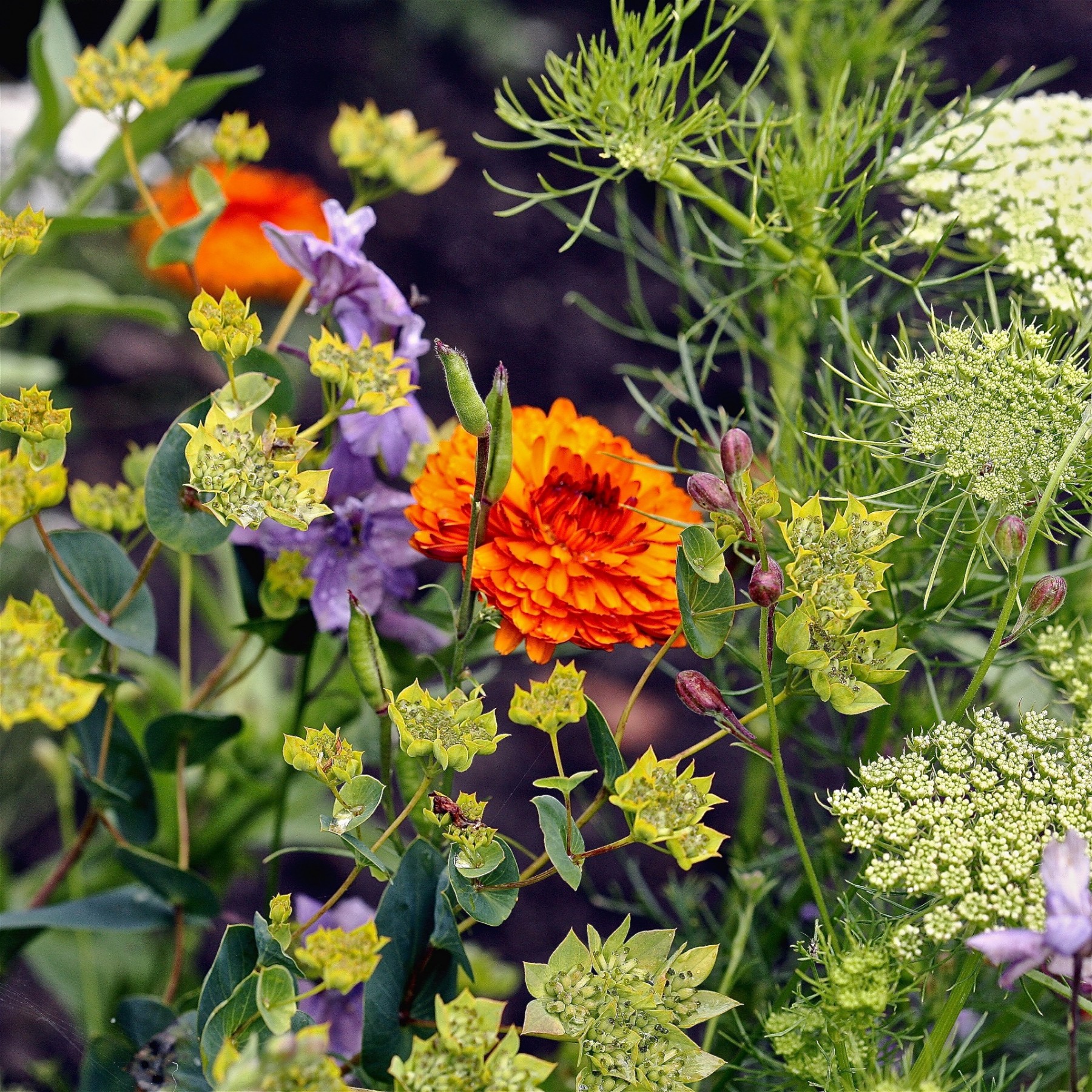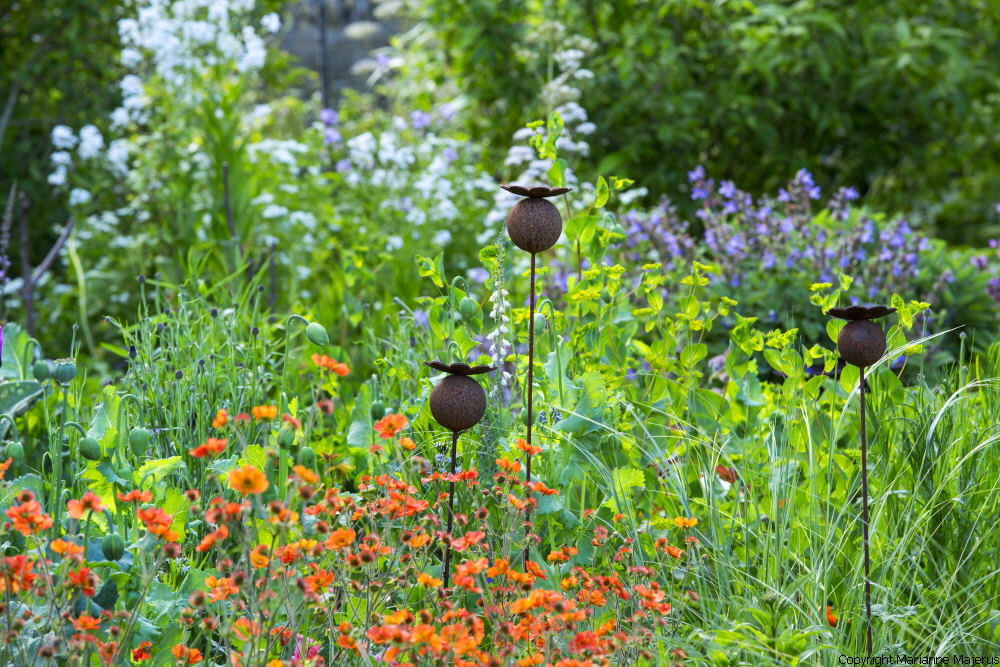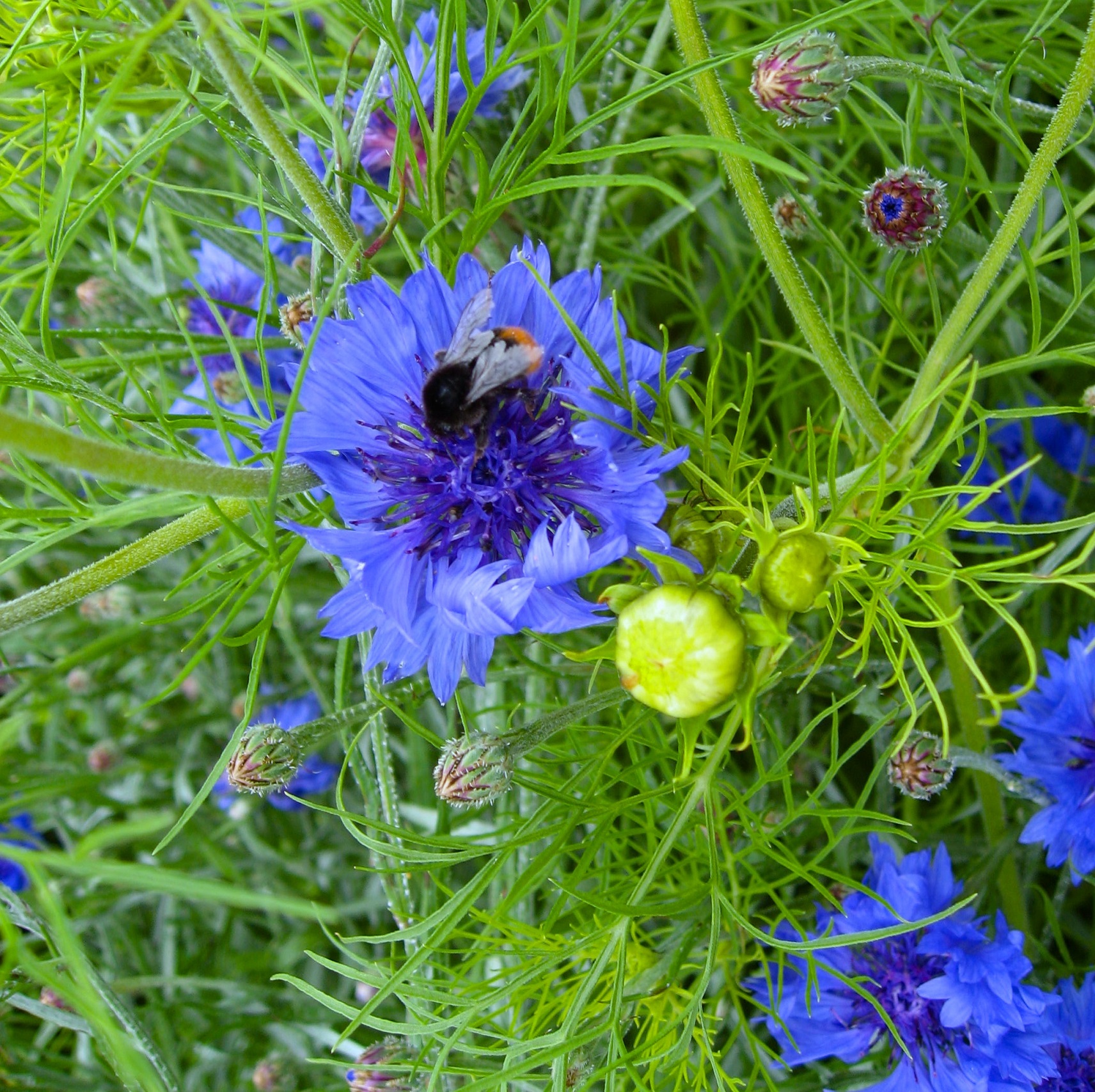
Gardeners are very suspicious about organic gardening but, as I always say it isn’t a new-fangled thing. It’s been practised for centuries by our ancestors, who knew the importance of the natural world when it came to growing crops. Winchester Cathedral’s thousand or so 14th century roof bosses contains some with flowers and vegetables. These almost always have a creature or two in the same boss. It might be a bee, spider, butterfly, lacewing or damsel fly and you’ll also find snails and predatory beetles on these colourful roof bosses too. Our ancestors were fully aware of the links between plants and the natural world.
Medieval gardeners used every inch of space and left no bare ground. They harvested edible weeds, when their crops were. Although I don’t eat my weeds, I do try to cover every inch of the ground with plants and I favour annual plants, because they’re packed with rich energy-giving nectar and protein-rich pollen.
Our ancestors were much more in tune with the seasons and there was a calendar. Straight after the 12 days of Christmas, when everybody had feasted and rested, came Plough Day. It was always the first Monday and this year it fell on January 8th. Church ceremonies were held to bless the plough. Farm labourers used to blacken their faces with soot and drag a decorated plough around the larger houses in the villages to raise money because work was scarce in the winter months. Soon after came Candlemas, a Christian festival that now honours the Virgin Mary. It’s pagan equivalent was Imbolc and this falls midway between the winter solstice and the spring equinox. They watched the weather, the sun and the stars.
Gardeners have to develop a similar sense of the seasons and it’s definitely time to get going. If you’re lucky enough to have a greenhouse, and every gardener should have one, you can steal a march on the year. The very first thing you need to do is make sure that the glass is clean so that you get maximum light and I’ve just invested in a power washer. Then I’ll be sowing hardy annuals, because they’re capable of withstanding frost. These are insect magnets, more so than any other plant.

I’m determined to do better this year, for last year was a disaster. All the annuals I sprinkled on the soil failed to germinate so I am going to sow them in the greenhouse this year. One of the first will be the blue cornflower, Centaurea cyanus, because this is the best plant for red-tailed bumblebees (Bombus lapidarius). They adore it. The seeds are fairly large, so I use modular trays and pop one or two seeds in each space. This saves pricking out. It’s important to use seed sowing compost, because it’s low in nutrients, and watering is kept to the minimum, because damp compost soon turns into cold, claggy compost and that’s death to seeds. Water the modular trays well before sowing and then only when needed. All large hardy annual seeds can be sown in this way and they include calendulas.
The blue cornflower is good value. It picks well and, if you deadhead it, you can keep it in flower for months. It’s a warm-blue and I like to use orange nearby to make the blue seem brighter. I use close to a perennial called Geum ‘Totally Tangerine’ because this begins to flower in May and just keeps going right through until October. This relatively new plant, which was deliberately bred by Tim Crowther of Farplants near Littlehampton, is one of the best plants to be introduced in recent years.
I’ll try and add another hardy annual, Leonotus leonurus, and this monarda-like annual has whorls of flower up the stem. This will be sprinkled on to a half-size seed tray, because you can get lots of them on the bench. They’ll need pricking out and young seedlings transplant better than larger ones. Handle by one leaf when picking up seedlings, not the stem.
Some annuals are perfectly suited to hoverflies, those small wasp-like insects that you see hovering about in the garden. They’re busiest in the summer months and, if you get a really warm summer, you can get an awful lot of different hoverflies in your garden. Nearly all of them are
beneficial insects because most have predatory larval stage. The adults lay one single oval egg near aphid colonies and a tiny little grub hatches out, rather like a translucent maggot. Most are day feeding and, when they’ve cleaned up your aphids, they will pupate rather as a ladybird does. After a few weeks you’ll get an an adult another adult
Hoverflies have tiny mouth parts so they can’t access deep flowers or double flowers. They need tiny, easily accessible flowers and two groups are very very important for them. The first is the umbellifer, with its umbrella-like arrangement of spokes topped with tiny flowers. Our native cow parsley, Anthriscus sylvestris, is perfect for them and there is a dark form called ‘Raven’s Wing’.

There are some good annual umbellifers to sow in spring, but one of the best is Bupleurum rotundifolium ‘Griffithii’ from Chiltern Seeds wwwchilternseeds.co.uk. It’s commonly called Hare’s ear and it’s about a foot high. It has lime-green tiny flowers, surrounded by limy bracts, and the foliage is grey-green. It’s makes a tremendous foil for more colourful plants such as larkspur or nigella. It will often self seed, but I always make sure that I save some seed as insurance. This umbellifer is sown in a small tray in spring, pricked out and potted on.
Hoverflies are also attracted to orange and yellow so I always grow African marigolds with single or semi-double flowers. Some varieties are taller than others. ‘Tall Scotch Prize’ ( from Mr Fothergill’s) will reach about 15 inches in height and be quite billowing. Most are more compact, about 6 inches in height.
I’ll be planting roughly 30 hardy annuals this year because I want my garden to be abuzz and aflutter. It’s summer in my head already – thanks to my greenhouse!



